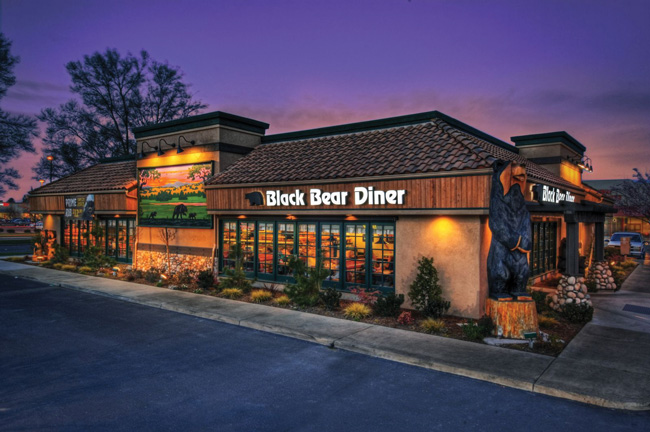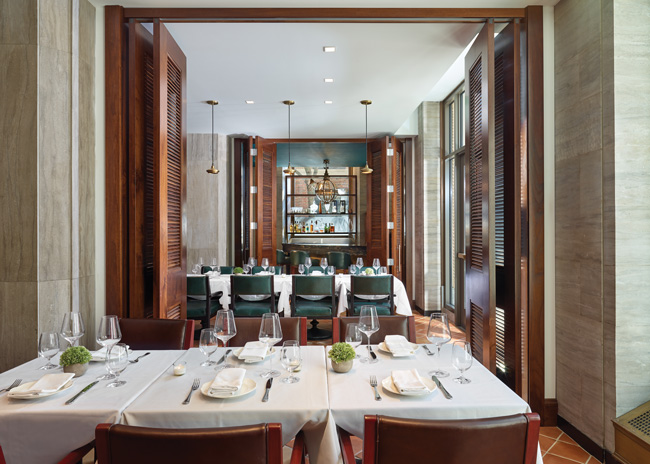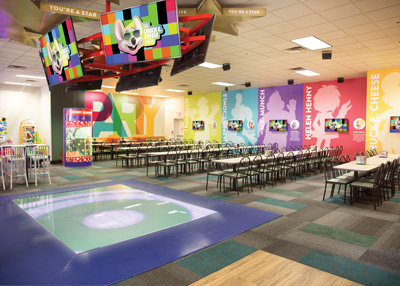In this first-ever reader survey, rd+d asked subscribers to name the biggest trends and challenges in restaurant development and design in 2019. The survey included a mix of multiple choice and open-ended questions that gave readers the ability to weigh in and dictate the big ideas and top-line challenges they face in their work.
The results offer some consensus about where the industry is — obsessed with takeout and delivery and consumer convenience overall — and where it’s heading in order to provide a mix of benchmarking and shared concerns about the current political landscape now and in the near future.
In addition to covering trends and challenges, readers weighed in on technology’s impact on restaurants. Traditionally, foodservice hasn’t been a part of the evolving tech landscape. But in the last few years, technology has finally come to disrupt the restaurant market and brought social media, enhanced apps, third-party delivery, and a host of other challenges and opportunities.
Design Trends
Staying on top of new trends is one of the biggest challenges facing design teams, according to 30% of survey respondents. Given the pace of change and trends, it’s easy to see why, but it also didn’t prevent survey participants from holding back on forecasting trends for the next two to three years.
Changes in design are driven by the rise of delivery, technology (everything from social media to self-serve kiosks), and the push for open kitchens, according to survey respondents. Many of the changes are resulting in smaller footprints and an emphasis on sustainable design and construction that has a discernable return on investment for the operator.
Some key themes emerged when it came to drivers of future design trends. One respondent summed it up: “More prominent off-premise pickup areas for consumers and delivery personnel, smaller dining areas, better designed multi-lane drive-thrus, more open kitchens, and better integration/design of customer-used tech to reduce friction points.” Indeed, the vast majority of respondents to this open-ended question touched on those areas and one more: designing for an increased reliance on technology with the goal of increasing labor efficiencies and reducing rising labor costs.
Restaurants will continue to move in the direction of sustainability, respondents felt, with a farm-to-table ethos driving menus, almost regardless of the market segment. Over and over again, respondents offered up variations on key themes: smaller stores, open floor plans/open kitchens, dedicated carryout and pickup areas, making more of smaller spaces (both in the front and back of house), adjusting to the possibility of there being long-term labor shortages by designing operations that reduce traditional labor needs, more and more self- or mini-service stations/operations, and more app and online orders of all kinds. There were also some bold declarations as one respondent declared that “full-service restaurants will become a thing of the past!”
Softer lines, BoHo, art deco and Nordic influences got specific callouts as the next big trends in restaurant design.
In terms of aesthetics, most respondents believe bold designs will remain in the front of the house, specifically designs that “create a sense of place” with a turn away from rustic or industrial chic. Softer lines, BoHo, art deco and Nordic influences all earned specific callouts from survey participants as the next big trends in restaurant design. There were also nods to installing dynamic lighting and creating brighter spaces overall with fewer communal seating areas in future locations.
A handful of respondents to the survey suggested that outdoor dining — from drive-thrus to patios to rooftop gardens — is coming up more often and taking on more forms. That means the line between inside and out is getting as blurry as the line between the front and back of the house.
Another key takeaway is that footprints are shrinking in response to rising real estate prices and decreasing on-premise dining. Just 6% of respondents think footprints will increase in the next few years. An overwhelming majority (69%) think footprints will decrease, and just 25% think footprints will stay the same size. Readers forecast that footprints will decrease by an average of 18.44%. In terms of allocating space to the back versus the front of the house, the mean number was 37% of the floor plan dedicated to the back of the house and 63% dedicated to the front.
Technology’s Impact
For those that felt customer-facing technology affected their approach to restaurant design, the biggest impact (49%) was a redesigned front of house. In the open-ended responses to this question, the impact of technology on design included adding larger or separate counters for prep and pickup, adding drive-thrus (of all kinds), adding self-service kiosks, and paying more attention to the “flow of orders from path to purchase.”
Specifying technology in restaurants is increasingly becoming a role for today’s restaurant designers, according to our survey. Among those involved with specifying technology, 52% said they select third-party delivery app partners, 48% said they specific self-ordering kiosks, 40% specify restaurant-specific apps and 25% specify table ordering and online payment systems. Others noted they were involved in selecting upgraded drive-thrus, enhanced LED menu boards and advanced lighting control systems.
In the face of expanding tech responsibilities, 31% of survey respondents admitted that upgrading technology is one of the restaurant design challenges their teams face. Technology concerns came up repeatedly in open-ended questions about how technology and the push for convenience and/or creating social-media-ready experiences is affecting restaurant design and development.
Development Trends
Managing the budget, schedule and regulations were top concerns among readers who work in restaurant development.
Site selection and real estate are always a challenge and a key concern as 50% of respondents said they’d seen an increase in the cost of real estate (43% said prices were flat), but when asked to put that factor aside, 68% said that their next biggest consistent challenge is working within budget constraints, and 56% said that meeting tight timelines was an ongoing concern. Other top concerns were meeting municipal regulations and ordinances (51%), finding qualified contractors (47%) and pulling building permits (42%). Other mentions of problems were dealers delivering damaged products and constant client changes.
On average, from concept to completion, it takes 6 to 12 months for our readers to develop and build a restaurant, according to 49% of respondents. Just 11% said it takes less than 6 months, and 33% said it takes less than 2 years. About 7% said it takes more than 2 years.
While an old rule of thumb said it was important to remodel units about once every 7 years, that time frame is tightening. Remodeling is increasingly important, with 37% saying they remodel existing locations every 5 to 6 years and 35% saying they remodel every 7 to 9 years. The next closest was every 10 to 12 years at 22%. Just 4% remodel every 4 years or less, and just 2% remodel every 12 years or more.
Growth Drivers
The open-ended question of what will drive growth in the restaurant industry resulted in the majority of respondents offering up some variation on the continuing popularity of food prepared away from home, with takeout and delivery, grab-and-go, increasing dayparts and snacking opportunities as pathways to growth.
“People have less time for cooking, cleaning and shopping, but we all still have to eat. The availability of delivery via apps is too expensive right now, and they will struggle to find balance in the space, but adoption is assured because people are allocating their time differently now,” said one respondent. Another said growth will come from “off-premise demand” and will reward “concepts with a resilient value-proposition and enhanced customer experience/design that addresses or changes with the growing need for speed/convenience in the market place.” The next biggest issues that came up was a mix of global economics, a tight labor market and public policy concerns.
Still another answer that came up repeatedly was how menu drives design and what that will mean in the next couple of years. Many respondents felt that the increased focus on vegan, keto and other specialty diets among average consumers will become a driver in menu creation (and therefore design) in the coming years. For respondents that focused on the in-restaurant dining experience, they noted that expanding dayparts needed to be combined with value and quality of service and experience to fuel growth. To continue to be successful, operators need to balance quality food with great service — and service has come to take on many forms.
Hindrances to Growth
In terms of what’s hindering growth, labor shortages and rising labor costs were mentioned repeatedly by survey respondents in an open-ended question. “The minimum wage is increasing,” said one respondent, echoing many others. “Labor costs and the cost of goods are correlated and both are on the rise.” Other concerns were increasing food costs, increasing real estate costs, oversaturation of trends (like poke), unplanned massive growth of new concepts rather than strategic expansion and increased competition overall.
One respondent summed up the concerns of many: “Labor laws will make it harder for independents to grow. Regulation will prevent many from entering the space in the traditional way. Food halls will become an entry place for entrepreneurs. Those who do well there will go on to build their own property.”
Immigration policies, trade wars and tariffs, fears of a recession, and other regulations were also mentioned several times by respondents. +
Trends, Tech & Benchmarking
What are the biggest design changes you’ve seen in the restaurant industry in the last few years?
- 55% More carryout services
- 49% More technology across the board
- 48% Open kitchens and open floor plans
- 45% Smaller store footprints
- 24% Greater emphasis on energy efficiency
- 20% Greater emphasis on using sustainable building materials
What are the biggest restaurant design challenges facing your team?
- 48% Managing project budgets
- 32% Finding and retaining good construction partners
- 31% Regulations
- 31% Upgrading technology
- 30% Staying on top of new trends
The survey allowed for multiple responses.
How has customer-facing technology affected your approach to development or design?
- 49% Redesigned front of the house
- 34% Smaller restaurant footprints
- 24% It hasn’t
- 11% Redesigned back of the house
If you do, what types of technology are you specifying in your restaurant projects?
- 52% Third-party delivery via apps
- 48% Self-service kiosks
- 46% Cashless smartphone transactions
- 40% Restaurant-specific apps
- 17% Upgraded drive-thrus
How has what you are looking for in restaurant locations changed in the last few years?
- 56% More nontraditional locations
- 45% More urban spaces
- 40% Smaller spaces
- 29% More suburban locations
- 7% Bigger spaces
The survey allowed for multiple responses.




